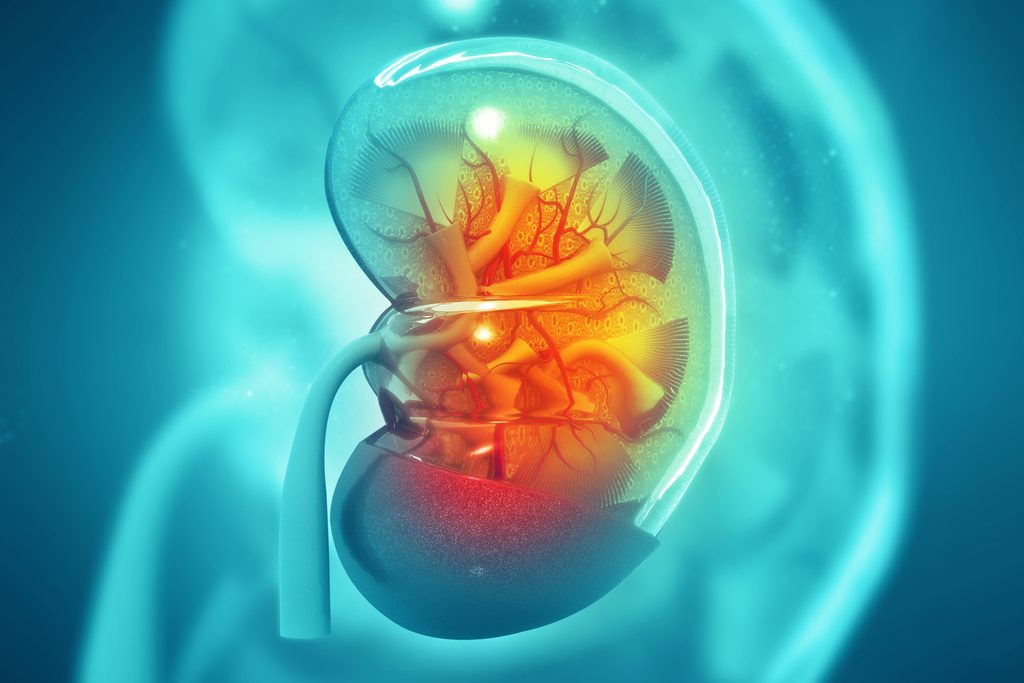Chronic Hypoparathyroidism Linked to Higher Risk of Kidney Stones

People with chronic hypoparathyroidism have a significantly higher risk of kidney stones compared with patients without chronic disease, a large study finds.
These patients also have a much greater risk of experiencing calcium deposits or calcification — called nephrocalcinosis — in kidney tissue, the results show.
According to the investigators, further research is needed to clarify how hypoparathyroidism and its management raise the risk of these conditions. That ultimately could aid in the prevention of kidney complications among patients.
“The study … provides evidence for the potential contributions of hypoparathyroidism to renal outcomes with costly and severe health consequences,” the team wrote.
Appearing in the journal Advances in Therapy, the study is titled “Risk of Nephrolithiasis and Nephrocalcinosis in Patients with Chronic Hypoparathyroidism: A Retrospective Cohort Study.”
Chronic hypoparathyroidism is caused by a deficiency of the parathyroid hormone (PTH), which regulates the levels of calcium and phosphate in the body. Calcium is a mineral that keeps bones and teeth strong and is essential for the proper functioning of the nerves, muscles, and heart. Phosphate, meanwhile, is needed to build and repair bones and teeth, help nerves function, and make muscles contract.
PTH deficiency leads to diminished calcium and increased phosphate levels in the blood.
The standard treatment for chronic hypoparathyroidism, namely oral calcium and vitamin D supplements, helps boost calcium levels and reduce symptoms. However, such treatment has been linked to several renal complications, including kidney stones and calcification.
Now, a team including scientists at Takeda, which funded the study, evaluated the impact of chronic hypoparathyroidism on kidney function and the risk of kidney complications. The researchers used data from a large U.S. patient database, taken from managed care claims between January 2007 and June 2017.
A total of 8,051 hypoparathyroidism patients, who were not receiving PTH replacement therapy, were included in the analysis, along with 40,466 randomly selected patients without hyperparathyroidism, who served as controls. The two groups were followed up for a maximum of five years. All participants were at least age 18 at the start of follow-up.
Compared with controls, the hypoparathyroidism group was older — with a mean age of 58.6 versus 47.3 — and had more women (76.2% vs. 54.4%). The chronic hypoparathyroidism patients also had a significantly higher percentage of co-existing conditions at the start of follow-up, or baseline, than did controls. These conditions included hypertension, at 43.7% vs. 25.2%, high calcium levels in the urine, at 23.8% vs. 0.5%, type 2 diabetes, at 20.6% vs. 10.8%, and heart failure, at 5.9% vs. 2.4%. Patients with chronic disease also were more likely to have kidney stones — 3.3% vs. 1.3% — and had a higher incidence of nephrocalcinosis, at 0.6% versus less than 0.1%.
During follow-up, those with chronic hypoparathyroidism were found to have significantly elevated risk of kidney stones and calcification compared with controls. This association persisted after controlling for potential confounding factors such as age, sex, co-existing conditions, and medications.
Notably, in patients who did not have kidney stones at the start of follow-up, the risk of developing kidney stones was still higher for hypoparathyroidism patients than for controls.
The team then did an analysis of a subset of 2,277 chronic hypoparathyroidism patients (28.1%) and 4,213 controls (10.4%), who had results from at least one kidney imaging procedure. They found that 59 patients (2.6%) and 20 controls (0.5%) were diagnosed with nephrocalcinosis.
“This study assessed much larger cohorts [groups] than most previous studies of hypoparathyroidism,” the scientists wrote. “Results from more than 8,000 patients with hypoparathyroidism and more than 40,000 patients without it will likely be generalizable to patients with hypoparathyroidism in the United States.”
“Further research is warranted to better understand the potential mechanisms for the relationship of chronic hypoparathyroidism and its management with the observed risk of these conditions,” they added.
Among the study limitations, the investigators said, were potentially unaccounted for differences between the hypoparathyroidism and the control groups, underreporting of nephrocalcinosis — which may be asymptomatic — and limited access to laboratory data.






